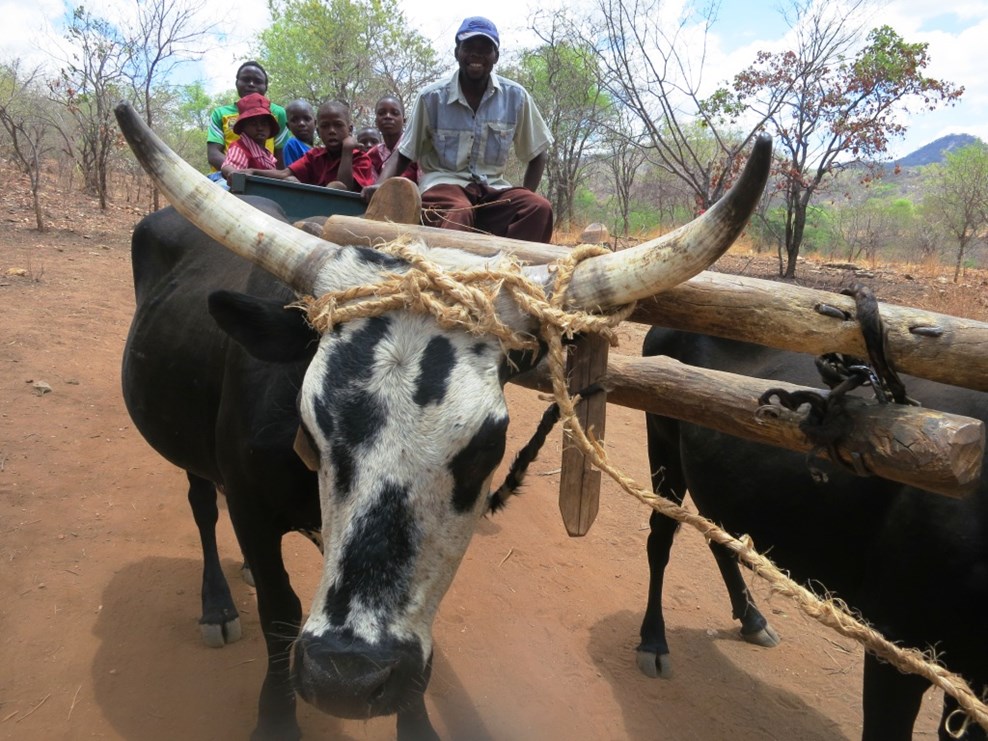Click to download this impact story as a PDF
The facts
Between 1974 and 1979, Rhodesia spent almost Rh$10 million (around US$76 million today) establishing a series of minefields along its border with Mozambique, to prevent infiltration and attacks from Zimbabwean liberation fighters of the ZANLA and ZIPRA resistance movements, based in Mozambique. The first layer of these barrier minefields, known as the Cordon Sanitaire, were devised to kill, and consisted of 3,000 to 5,000 mines per linear kilometre stretching along great tracts of the Mozambican/Zimbabwean border. While the vast majority of the minefield was laid inside Zimbabwe, significant portions crossed into Mozambique.
Our task
From 2012 to 2014, The HALO Trust was tasked with clearing the three largest sections of the Cordon Sanitaire minefield inside Mozambique, in the Magoe and Changara districts of Tete Province. These minefields had long been a source of danger and insecurity for the communities living in their shadow.
The threat
Despite the remote nature of these communities, there is extensive agricultural activity in the area. People regularly cross the border for trade, to access resources or simply to visit family. Those living on both sides of the border share deep ethnic and cultural ties that do not recognise international frontiers. In the region that HALO was tasked with clearing, 11 of the 12 Mozambican communities visited by HALO’s Community Outreach Team reported deaths and injuries caused by the minefield. Nine people died, 35 were injured and 1,545 cattle were lost.
Many of the deaths occurred as the population was transiting the border to access water, markets or schools, or to reach land for farming and grazing. With one cow costing around US$200 in Mozambique and almost US$500 in Zimbabwe, the animal deaths alone can be said to have cost the local population between US$309,000 and US$772,500. In Mozambique, where GDP per capita was at approximately US$450 in 2014, such losses drastically reduce the financial security of rural households and can lead to a downward cycle into severe poverty.

Results and impact
Over two years, HALO cleared 644,477m² of minefield and safely destroyed 36,419 mines benefitting more than 28,000† local people (54% of which were children).
HALO did not only clear minefields. Four boreholes were also installed in the area to support the demining teams. The boreholes have proved to be an invaluable resource, making clean water more accessible for 634 people and 145 cattle. The boreholes, which provide on average 118 litres of water per week for drinking, cooking and washing, also aid sanitation and health practices.
To help teams reach the minefields, HALO repaired weirs and bridges and engaged a community team from Muzunga to improve 7km of road. This improved transport links and access to market and resources. Importantly, the completion of clearance by HALO in November 2014 allowed the Mozambican government to declare Tete Province landmine free at the end of the year.
†This number does not take into consideration those living on the Zimbabwe side of the border.
Measuring impact
HALO’s post-clearance monitoring and evaluation processes revealed that 11 of the 12 impacted communities had started using the former minefield within one to two months of clearance. The communities’ initial plans for the cleared land are for farming and grazing livestock, which could generate an annual income ranging from US$142,510-US$354,750. The value is higher when activities where the numerical benefit is harder to calculate such as housing and foraging are included.
Zimbabwe still needs help
Since completion of HALO’s clearance, one of the 12 villages, Capandazi, suffered two cattle accidents on stretches of the Cordon Sanitaire minefield inside Zimbabwe. These accidents are useful reminders that, while clearance of the border minefields in Mozambique has been completed, mines are still a significant problem for communities living on the border in Zimbabwe. So, although HALO is pleased to be bringing an end to its operations in Mozambique, we look forward to increasing our capacity in Zimbabwe.




 Visit our HALO USA website
Visit our HALO USA website
